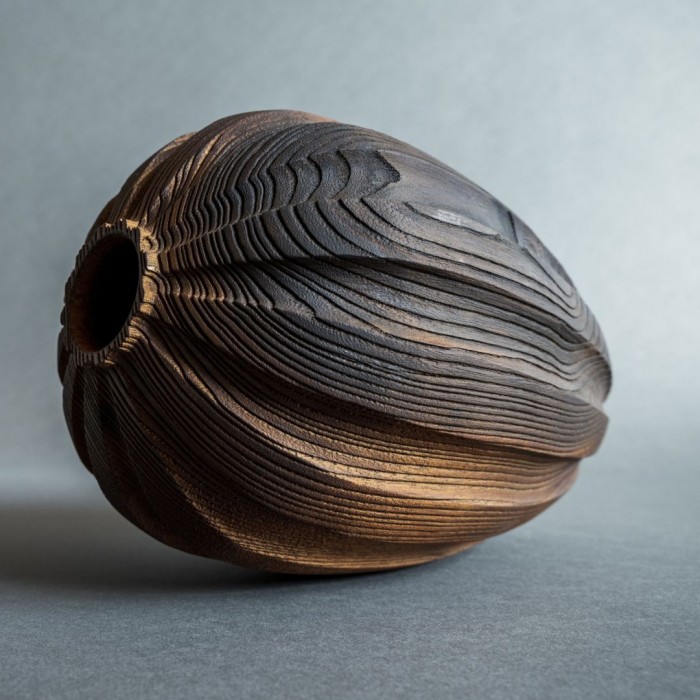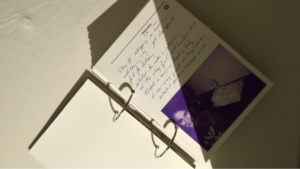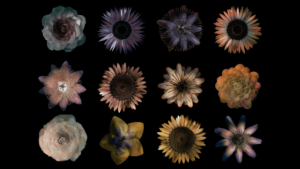Up until two years ago, Oliver Chalk was an artist and designer who specialised in exploring material and symmetry with large-scale fabric installations made from thousands of sewn-together pieces. While the lockdown put a stop to the events that held his installations, Chalk continued to find beauty in symmetry and geometry in a new medium: wood.
Chalk, who gathers his wood from areas surrounding his studio, turns his findings into intricately carved vessels that enhance the natural textures, grain, growth rings and colours.
‘Found.Wood’, the title of this creative project, summarises Chalk’s exploration of the new material, the learning of a new skill and his investigation into the geometric possibilities of wood. The entire ‘Found.Wood’ process is essentially a conversation between the maker and material, and nature and the man-made.
We interviewed Chalk to find out more about his move to working with wood, how material knowledge informs his sculpting process and his exhibitions at Gallery 57.
-
On your website, it states that up until 2020 you worked with large-scale fabric installations before moving to work with wood. What inspired or informed this change of medium?
Navigating to wood occurred at the start of the pandemic. Working in the events industry for over a decade, all work ceased overnight, causing me, and many others, to rethink the creative avenues available. Having travelled extensively for work over the years, the pandemic offered me a chance to stand still, slow down and re-evaluate. Living in the countryside and looking to my immediate surroundings for a new creative outlook, wood was an obvious choice – an opportunity and experience that I am truly grateful for.
-
You are a self-taught wood sculptor. How did you learn your skills and techniques?
Having no prior skills or knowledge of working with wood, it was and still is a truly engaging experience for me: learning the basics through trial and error, following my intuition and using internet platforms to research any questions I had, mainly regarding safe working practices and specific tool uses. I’m a firm believer in learning through practice – my hands are my greatest asset and my willingness to embrace failure has always served me well, offering steep but invaluable learning curves.
-
Take us through your creative process. What guides the selection of wood for your sculptures etc?
Material knowledge is a prerequisite before starting any new project. Learning the properties of different wood, which part of the tree it has come from and the orientation of the wood offers an insight into potential outcomes – although working with natural materials you can never be quite sure what you might come across. A facet of working with wood that excites me greatly.
Having always been process-driven, wood offers endless opportunities for exploration, and creating forms really is a starting point for my enquiries. Having become truly captivated by surface and the composition of process, an act of play ensues. The building up of patinas through staining, stripping back and reworking, sandblasting or carving offer further development of my applied intuition. My work and impetus to make comes from a place of wanting to engage in the existence of things. To me, my process of creation is a deeply personal experience, to which the outcome is really only the residue of that process. The workshop is my sanctuary, a place to go deeper and explore my curiosity about what it means to be human.
-
You have three upcoming exhibitions at Gallery 57. Explain how each of these exhibitions differs and the inspiration behind them.
I find creating new cohesive bodies of work for exhibitions a liberating experience; every one a further development of a self-portrait, acknowledging continual growth and reflection of where I am psychologically at the time, drawing upon cultural and personal enquiries. The collections themselves become a biographical framework hinting at the unanswerable.
‘Landmarks’ comes from a place of turmoil, posing the question ‘are we being good ancestors?’ Reflecting on the reality and experience of the pandemic by probing into the idea of human predominance over our landscape, in this age of the Anthropocene. Through the use of scorched and stained texture, this votive gathering of vessels offers an illustration of human disruption upon our landscape and what I have chosen to leave behind.
-
What are you working on at the moment?
I’ve arrived at the place where green wood, scale and surface have become fundamental in my practice with work now taking exponentially longer than before. Thus providing the time and space needed for the dialogue between material and maker to really sing.
I’m now in the workshop developing new works and material understanding to be shown next year with Gallery 57. A series of carved works are coming to fruition, which I’m pleased to be showing through ’Earth Materials’ early next year. A few other exciting avenues have opened up recently, which I’m hoping to be able to share in the not too distant future.
Read more:
Thinking for, and beyond, COVID-19.
Credits: Oliver Chalk
Photography credit: Elliot Payne







